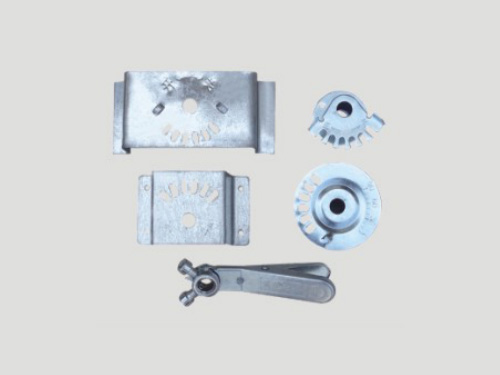Air valve mechanism
Air volume control valve actua
Air valve actuator
Remote controller for smoke ex
Air conditioning accessories
tuyere

Manual regulating valve
Manual regulating valve is a control component widely used in pipeline fluid delivery system. It is mainly used to change the passage section and the flow direction of the medium. It has the functions of diversion, cut-off, regulation, throttling, check, diversion or overflow pressure relief. The following is a detailed analysis of the manual regulating valve:
1. Structure and composition
The manual regulating valve is generally composed of valve body, valve cover, valve stem, regulating valve core, valve seat and other components. The valve body and valve cover are usually made of cast iron, steel and other materials, while the valve stem and regulating valve core are mostly made of stainless steel to ensure its corrosion resistance and durability. There is a valve seat inside the valve body. When the valve core is sealed on the valve seat, the fluid passage can be closed.
2. Working principle
The manual regulating valve controls the movement of the valve core by rotating the valve stem, thereby adjusting the flux of the fluid through the valve. The specific working principle is as follows:
Valve core movement: When the valve stem rotates, the valve core moves accordingly, thereby changing the relative position between the valve core and the valve seat.
Fluid control: Different positions of the valve core correspond to different fluid flux sizes. When the valve core is fully open, the fluid can pass through the valve freely to achieve maximum flux; when the valve core is fully closed, the fluid cannot pass through the valve and reaches the fully closed state. In the intermediate position where the valve core is not fully closed or open, by adjusting the position of the valve core, precise control of the fluid flux can be achieved.
Manual operation: The user controls the degree of opening of the valve by manually rotating the valve stem to meet different flow control needs.
3. Application scenarios
Manual regulating valves are widely used in various industrial fields due to their simple structure, convenient operation, high reliability and low cost, including but not limited to:
Chemical industry: used to control the flow and pressure of the medium and prevent the leakage of the medium.
Petroleum industry: used to control the flow and pressure of oil and gas and prevent oil and gas leakage.
Metallurgical industry: control the flow and pressure of the medium in the metallurgical process.
Papermaking industry: control the flow and pressure of pulp and other media.
Other industrial fields: such as fluid control in fertilizer, food and other industries.
4. Selection and considerations
When selecting a manual regulating valve, the following factors need to be considered to ensure that it meets the actual use requirements:
Fluid parameters: including the type, density, viscosity, pressure, temperature, etc. of the fluid. These parameters will affect the selection, material and specifications of the manual regulating valve.
Material: Select the appropriate material according to the chemical and physical properties of the medium to ensure the corrosion resistance and high temperature resistance of the manual regulating valve.
Operation method: There are many operation methods for manual regulating valves (such as rotary, scissor, push-pull, etc.), which need to be selected according to the convenience of use and adjustment flexibility.
Specifications and calibers: Select appropriate specifications and calibers to ensure the normal use of the manual regulating valve and the accuracy of fluid control.
5. Summary
As a key control component in the pipeline fluid delivery system, the manual regulating valve plays an important role in industrial production. It controls the position of the valve core by manually rotating the valve stem, thereby achieving precise adjustment of the fluid flux. When selecting and using a manual regulating valve, it is necessary to fully consider factors such as fluid parameters, materials, operation methods, specifications and calibers to ensure that it meets the actual production needs and maintains a good operating state.
Working principle of the actuator of the air volume control valve
Electric air volume control valve, as an intelligent air duct equipment, is widely used in air conditioning systems in fields such as construction, medical care, and industry. It can automatically adjust the opening of the valve according to the air flow
2024-05-06
The execution content of the fire damper actuator
To drive the valve action, a matching actuator is required. The actuator used for fire dampers may not be electrically driven, but may also be electrically driven.
2024-05-06
The structural composition of the fire damper actuator
The fire damper actuator is a type of actuator used for fire dampers in ventilation and air conditioning system pipelines, which solves the problem of inaccurate adjustment of the opening angle of valve blades, thus unable to accurately control the ventil
2024-05-06
What functions can the actuator of the air volume control valve achieve?
The actuator of the air flow regulating valve is an automated equipment used to control the air flow valve in ventilation ducts. It can automatically adjust the opening of the air valve by receiving signals from the control system to achieve the goal of c
2024-05-06
